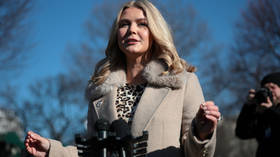Moscow hippodrome plays host to troika races
This weekend, Moscow is enjoying one of the most graceful traditional Russian winter pursuits – annual sled troika races. The first troika competitions were held in the Moscow hippodrome in 1840.
A troika is a carriage pulled by three horses. The horse in the middle is harnessed in a collar, while the two others pull breast collar harnesses. As such, a troika’s speed can reach as fast as 50 kilometers per hour.
The form of transport first appeared in the 17th century and was mainly used for postal services and carrying passengers over long distances and for special occasions like weddings.
During the Civil War in 1917-1921 it was widely used by all parties for mounting machine guns (such as a “Maxim”) with its combat crew, and was known as a “tachanka”.
The troika is widely employed in traditional Russian pictures, music and literature and is usually compared to a bird.
The best horse for a troika is considered to be the famous Orlov trotters, not only for their stamina and fast long stride, but also for their beauty and elegance.
In the past only very rich people could afford a troika with Orlov trotters.
Troika racing is a notoriously difficult sport, requiring at least five years of daily practice to control the troika. The arms of the coach must sometimes endure weights of up to 50 kilograms while trying to maneuver the horses.
Troika horses are also very well trained. The training starts with young horses of one and a half years of age and can take up to ten years to reach its full potential.
In addition, a traditional Russian troika is usually accompanied by around 100 bells under the collar and on the harness and is considered to be a musical instrument by some. The bells are not just a decoration, but also used to serve as a warning system to anybody in the way about the fast-approaching troika. Peter the Great tried to introduce horns, but the practical bells won the argument.
Nowadays, troika racing teams come from many Central Russian cities, as well as France and Finland, and head to Moscow for races.













